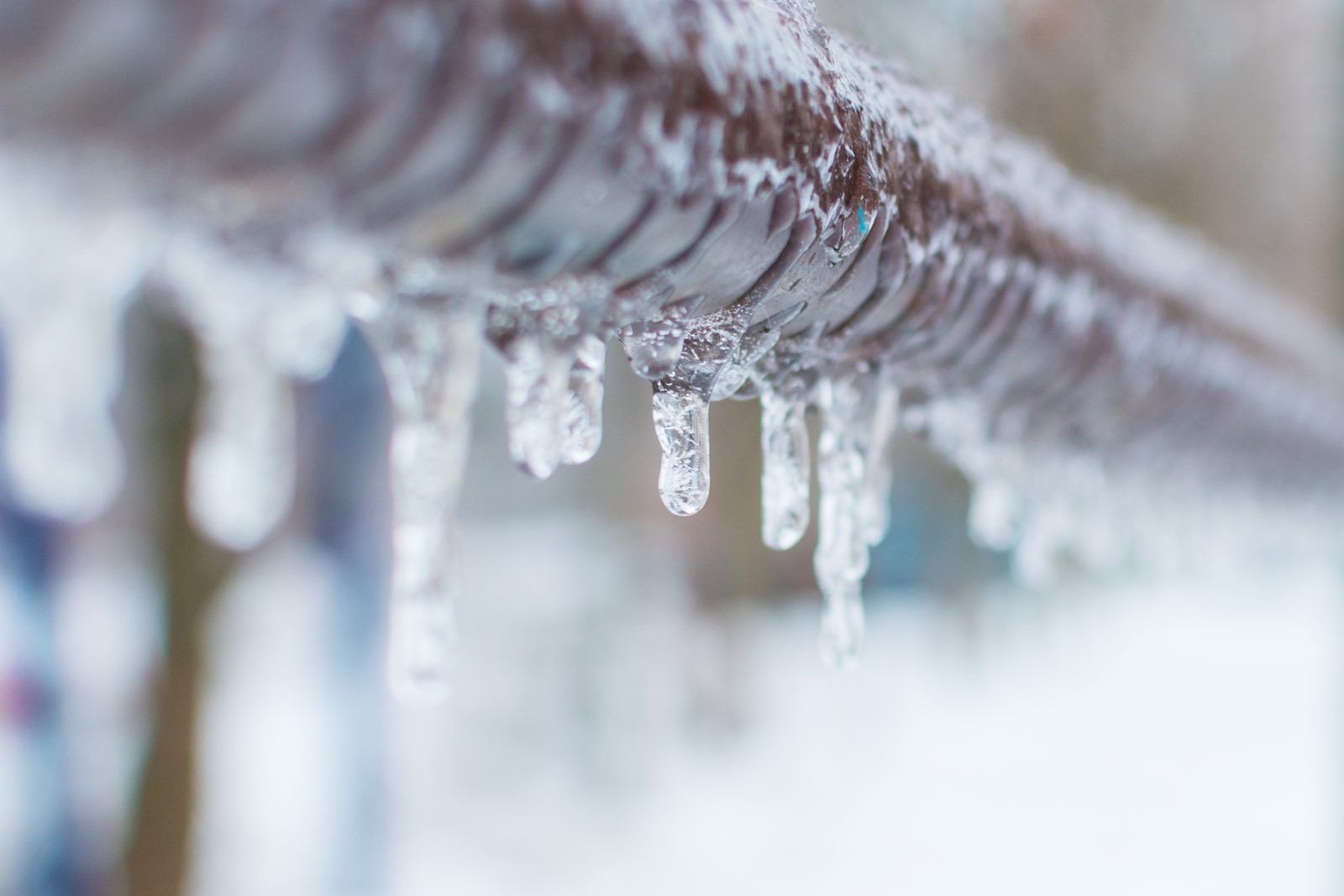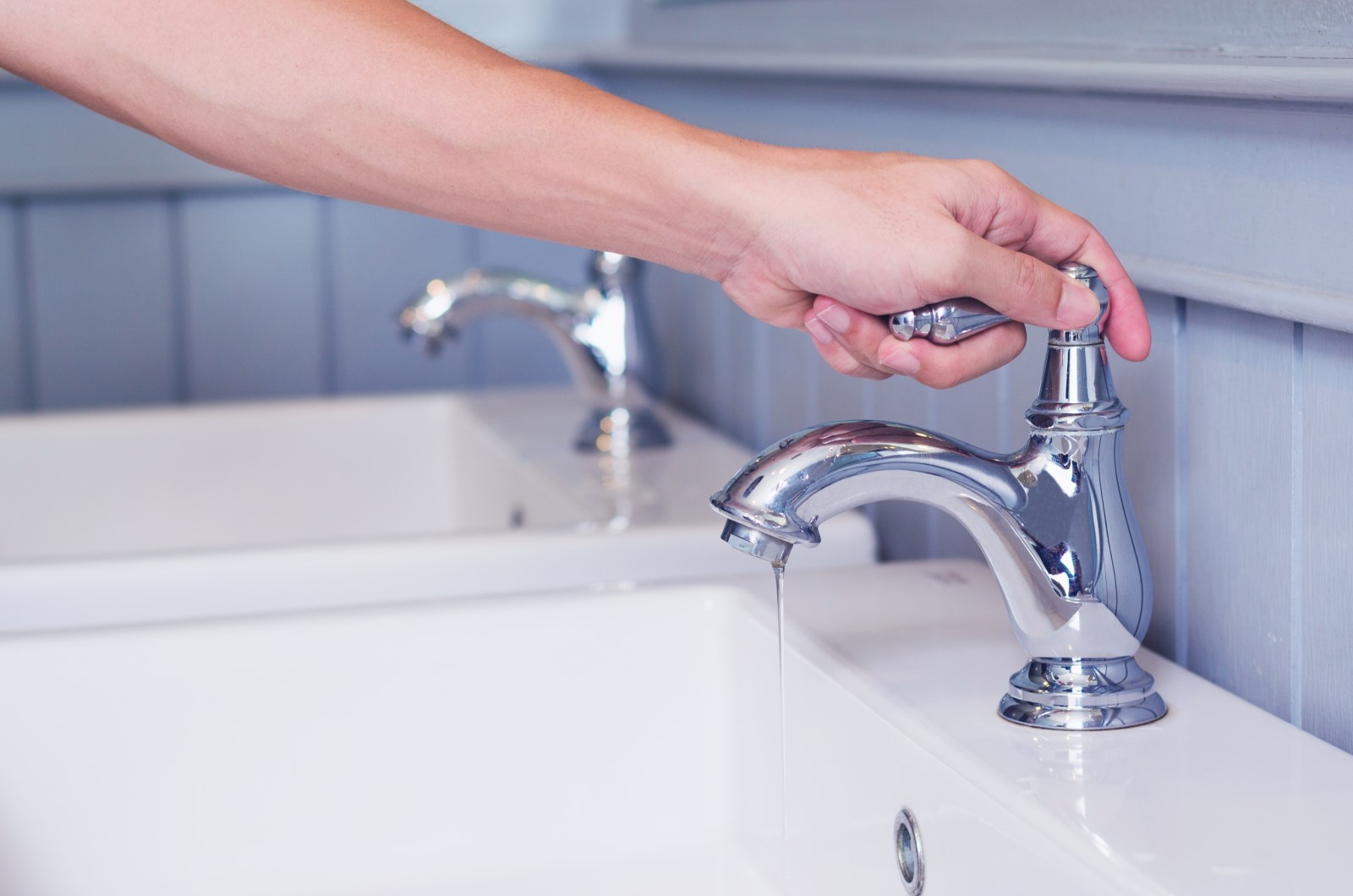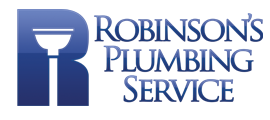
Waking up to frozen pipes is never pleasant. Having little or no water in your home is uncomfortable and inconvenient, but leaking or burst pipes can also cost you thousands in repairs and water bills when the weather warms up.
Frozen pipes require quick action to restore your water supply without causing further damage to your plumbing. Below we take a practical look at how to fix frozen pipes, including spotting the signs that your pipes are frozen, how to safely thaw them to prevent further damage, and what you can do to prevent your pipes from freezing in the first place.
Read on to learn more about sensible ways to handle and prevent frozen pipes this winter.
How Do You Know Your Pipes Are Frozen?
If you’re lucky, you’ll know your pipes are frozen as you wake up or return to your home when the weather is cold. Look for the following telltale signs:
- Reduced water flow: If you turn on a faucet or showerhead and just a little water comes out, water might be frozen somewhere in the line.
- Frost on pipes: Visible pipes, such as those on your home exterior or in basements, may be covered by a layer of frost.
- Unusual sounds: Clicking, clanking, or gurgling noises can occur as ice forms in your supply lines, blocking water flow and building pressure.
- Cold spots: Exposed pipes that feel very cold to the touch, are at risk during freezing weather.
- No water at all: When no water at all flows from an opened tap, this can be a sign that your pipes have already frozen solid and may be at risk of bursting.
Plumbing in certain areas is also more susceptible to freezing. These include pipes in:
- Unheated spaces like basements, crawl spaces, and garages
- Running along exterior walls
- In poorly insulated cabinets
- Exterior hose bibs
- Garden irrigation systems and fountains
- Pools and spas
How Do You Thaw Pipes Safely?
Prompt action to thaw frozen pipes will help prevent lasting damage. However, thawing frozen plumbing also requires care and patience to avoid causing damage or endangering yourself or others. Here’s how to unfreeze frozen pipes:
1. Turn Off Your Water Main
First, turn off the water main or connector supplying the frozen pipe. This will minimize pressure on the frozen section and prevent more water from flowing in to replace melted ice.
2. Turn On a Faucet
Now slightly open a faucet connected to the frozen pipe. This allows any free water to flow, relieving pressure and making it easier for ice to melt.
3. Use a Safe Heat Source
Use a hair dryer, heat gun, or heat lamp to gently apply heat to the pipe. Start near the faucet and work your way toward the frozen section. Never use a blowtorch or any other form of open flame, and never use space heaters in restricted areas like crawl spaces or near insulation.
4. Watch for Leaks
As water flows, observe for leaks around the affected area. Even a small crack or weep can result in significant water damage in just a few minutes.
5. Call a Professional
If you can’t find the frozen pipe section, if it’s not easily accessible, or if you’ve found a leak, it’s time to call a professional. The trained plumbers at Robinson’s Plumbing Service have specialized equipment and expertise to handle frozen or damaged pipes while protecting surrounding areas.
How Can You Prevent Pipes From Freezing?
When it comes to pipes and cold weather, an ounce of prevention is worth a pound of cure. Here are some smart, simple things you can do to prevent freezing and minimize the chance of damage to your pipes:
- Pipe insulation: Protect pipes in exposed or unheated areas with insulated sleeves or heat tape.
- Insulate vulnerable areas: Add insulation to unheated spaces like basements, attics, and crawl spaces, or add trace or heat cables to keep pipes warm.
- Seal cracks and openings: Use tape, filler, or insulating foam to seal cracks or pipe entry points in your home’s walls to keep out cold air.
- Drain unused pipes: Have the pipes in your garden irrigation system drained and winterized in the fall. Drain exposed pipes serving your pool or hot tub pump.
- Protect hose bibs: Have the experts at Robinson’s Plumbing Service install frost free hose bibs on your home. Exposed hose bibs can cause freezing in water lines running under your home, causing basement leaks. Always disconnect hoses from your hose bibs in the fall before freezing weather occurs.
- Maintain the temperature in your home: Open under-sink cabinet doors to make sure warm air reaches these areas. If you’re going away, set the thermostat to at least 55°F.
Let faucets drip: In extremely cold conditions, allow faucets to drip slightly. This keeps water moving, making it less likely to freeze.

Frequently Asked Questions
Knowing what to do about frozen pipes can help get you out of a jam quickly and prevent or minimize damage to your plumbing. Here are answers to some other common questions about how to handle frozen pipes.
How Do I Locate the Frozen Section of the Pipe?
Checking the water flow in different areas of your home, working back toward the nearest shut-off valve or main. Also, inspect any exposed pipes for frost or extreme cold to the touch.
What Should I Do If a Frozen Pipe Bursts?
Shut off the water main immediately to prevent further flooding. Assess the damage and call a professional plumber, like those at Robinson’s Plumbing Service, for repair. The sooner you act, the less damage will occur.
Should I Turn Off the Water When Away?
Turning off your water supply when you are away could make it easier for the water in your pipe to freeze. If you are going to be away during very cold weather, don’t turn your heat off or down too far.
How Do I Check for Leaks After Thawing Frozen Pipes?
Once you’ve thawed pipes and restored water flow, inspect the areas around the pipes for any signs of water leakage. To be sure, turn off all fixtures and watch your water meter.
For landlords or commercial building owners, Robinson’s Plumbing Service also offers our clients access to remote leak detection with a Flo Smart Water Monitor and Shutoff by Moen, which can detect leaks instantly and automatically shut off the water at unattended properties.
Should I Call a Plumber Even If There Are No Visible Leaks?
If you’ve experienced frozen pipes, it’s advisable to have a plumber inspect your pipes. Some damage may not be easily visible, and professional inspection can help you avoid future issues.
Frozen Pipes? Robinson’s Is Here For You
Waking up to frozen water pipes is a challenging experience. Robinson’s Plumbing Service can help you prepare your home for cold weather and assist with thawing and repairing frozen or burst lines.
In fact, our convenient plumbing maintenance plans offer you a range of on-tap preventative, scheduled maintenance, and emergency repair services right-sized to your needs and budget.
Choose one of our four personalized maintenance plans for up to 20% off on all repairs, plus:
- Annual inspection and maintenance plan
- Two-year warranty on all labor and materials
- Guaranteed response time for regular and emergency calls
- Green cost-benefit analysis for savings on water and energy bills
- Free winterization consultations during your annual inspection
We’re here to help. Contact us today at (804) 794-0918, or click below to learn more about how Robinson’s Plumbing Service can keep your home or office warm and dry this winter.
